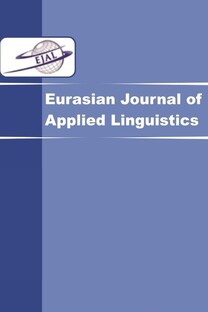The Representation of Migration in the Hungarian Context
The Representation of Migration in the Hungarian Context
Despite the decreasing number of immigrants and their negligible presence, migration has dominatedHungarian public discourse. The article investigates issues related to migration in three contexts. First,samples from the government’s immigration discourse, including a legislative package proposal andbillboards, are subjected to critical discourse analysis to establish what terminology and rhetoricaldevices are used to evoke particular kinds of emotion in the readers. Second, the billboards of a countercampaign organised by a Hungarian joke political party are explored to examine how they managed toturn around the message of the official campaign. Third, the paper investigates whether state educationin Hungary can establish the golden mean and provide a balanced view of migration. For exploring thelatter question, documents, such as the Hungarian National Core Curriculum in general and the sectionon the teaching of foreign languages in particular are analysed. The findings of the analyses showinconsistencies in the use of the relevant terminology and a predominantly biased view of migration inHungary.© 2019 EJAL & the Authors. Published by Eurasian Journal of Applied Linguistics (EJAL). This is an open-accessarticle distributed under the terms and conditions of the Creative Commons Attribution license (CC BY-NC-ND)(http://creativecommons.org/licenses/by-nc-nd/4.0/).
___
- Catalano, T. (2016). Talking about global migration: Implications for language teaching. Bristol: Multilingual Matters.
- Fairclough, N., & Wodak, R. (1997). Critical discourse analysis. In T. A. van Dijk (Ed.), Discourse and social interaction (pp. 258-284). London: Sage.
- Gibbons, J. (2003). Forensic linguistics: An introduction to language in the legal system. Oxford, England: Blackwell Publishing.
- Government of Hungary (2012). National Core Curriculum. Magyar Közlöny [Official Journal of Hungary] Retrieved from regi.ofi.hu/download.php?docID=5846
- Gödri, I., Soltész, B., & Bodacz-Nagy, B. (2014). Immigration or emigration country? Migration trends and their socio-economic background in Hungary: A longer-term historical perspective. Working Papers on Population, Family and Welfare, 19. Budapest: Hungarian Demographic Research Institute.
- Graddol, D. (1997). The future of English? London: The British Council.
- Grice, P. (1975). Logic and conversation. In P. Cole and J. Morgan (Eds.), Syntax and semantics 3: Speech acts (pp. 41-58). New York: Academic Press.
- Guido, M. G. (2012). ELF authentication and accommodation strategies in crosscultural immigration encounters. Journal of English as a Lingua Franca, 1(1-2), 219-240.
- Magyarország kormányának javaslata a Stop Soros törvénycsomagról [The Hungarian government’s proposal on the Stop Soros legislative package] (2018) Retrieved from http://www.kormany.hu/download/c/9a/41000/STOP%20SOROS%20T%C3%96RV%C3%89N YCSOMAG.pdf
- Hart, C. (2010). Critical discourse analysis and cognitive science: New perspectives on immigration discourse. Basingstoke, UK: Palgrave Macmillan. International Organization for Migration (n.d.). Migration issues in Hungary. Retrieved from http://www.iom.hu/migration-issues-hungary
- KhosraviNik, M. (2010). The representation of refugees, asylum seekers and immigrants in British newspapers: A critical discourse analysis. Journal of Language and Politics, 9(1), 1- 28.
- Kiss, E. (2016). “The Hungarians have decided: They do not want illegal migrants”: Media representation of the Hungarian governmental anti-immigration campaign. Acta Humana, 2016(6), 45-77.
- KSH Hungarian Central Statistical Office (n.d.) Population and vital events. Retrieved from http://www.ksh.hu/stadat_annual_1.
- Reisigl, M., & Wodak, R. (2009). The discourse-historical approach (DHA). In R. Wodak & M. Meyer (Eds.), Methods of critical discourse analysis (2nd ed.) (pp. 87-121). London: Sage.
- Seidlhofer, B. (2012). The challenge of English as a lingua franca. Anglistik: International Journal of English Studies, 23(1), 73-86.
- van Leeuwen, T. (2008). Discourse and practice: New tools for critical discourse analysis. Oxford: Oxford University Press.
- Yule, G. (1996). Pragmatics. Oxford: Oxford University Press.
- ISSN: 2149-1135
- Yayın Aralığı: 3
- Başlangıç: 2015
- Yayıncı: Ece Zehir Topkaya
